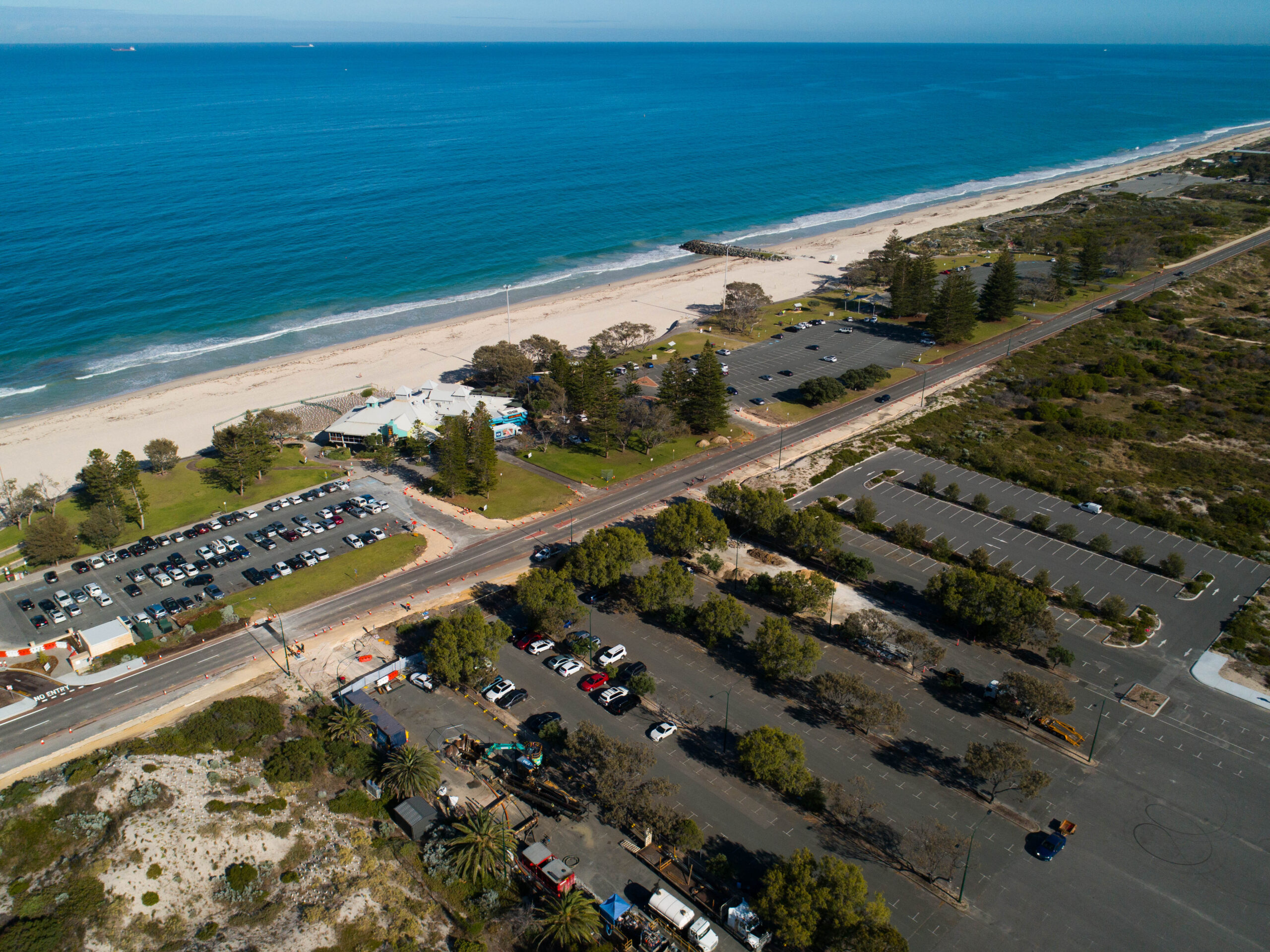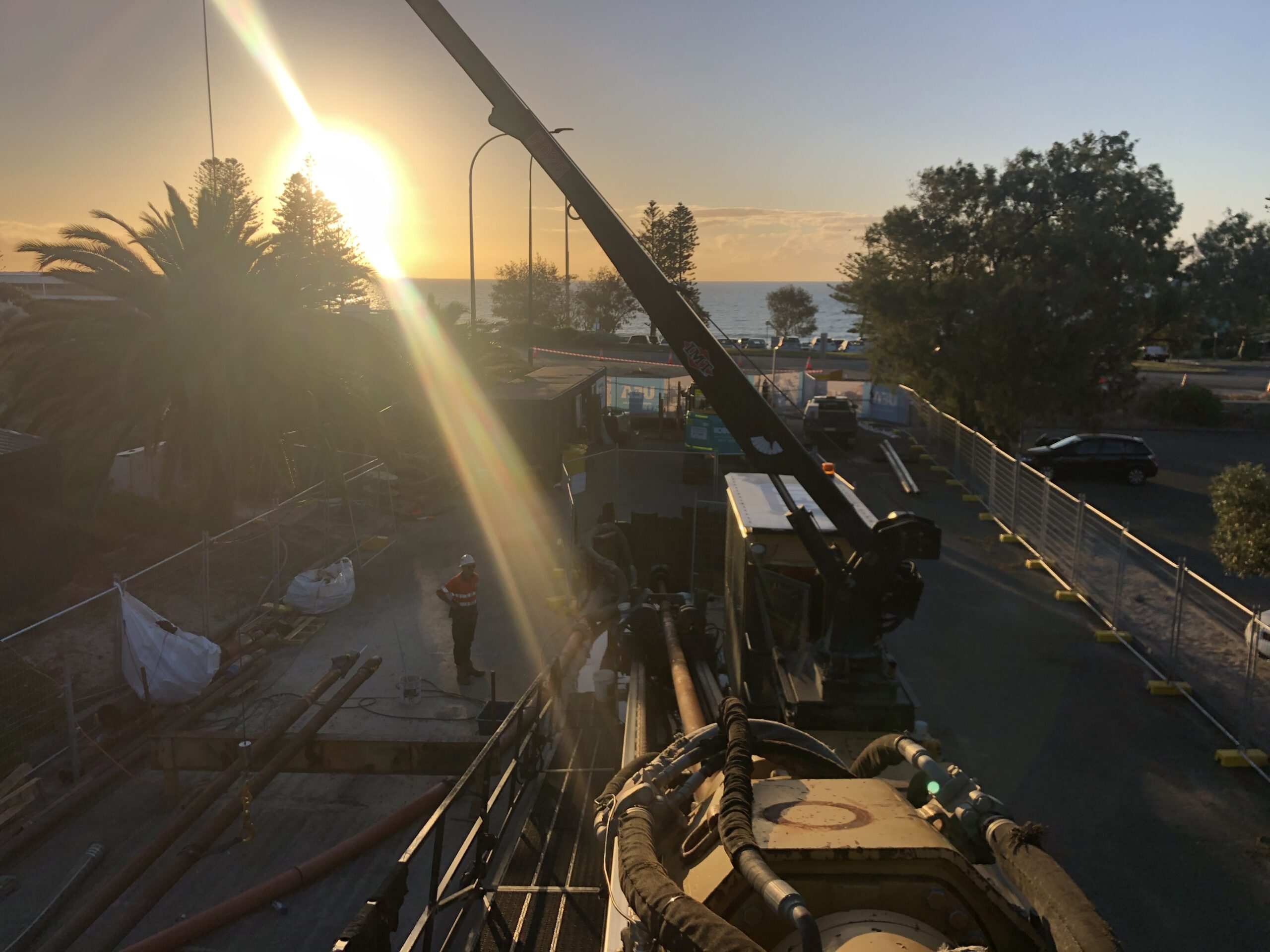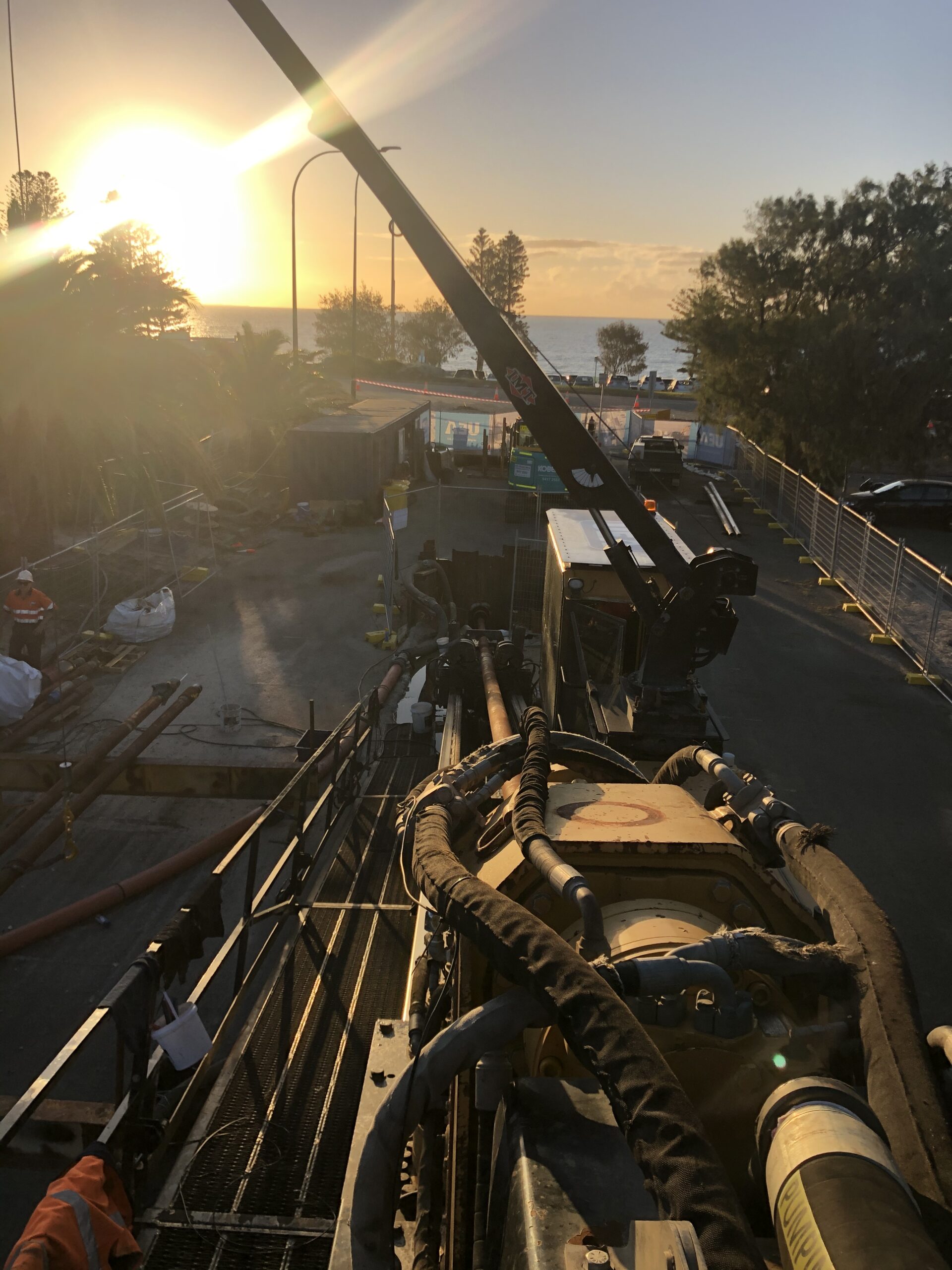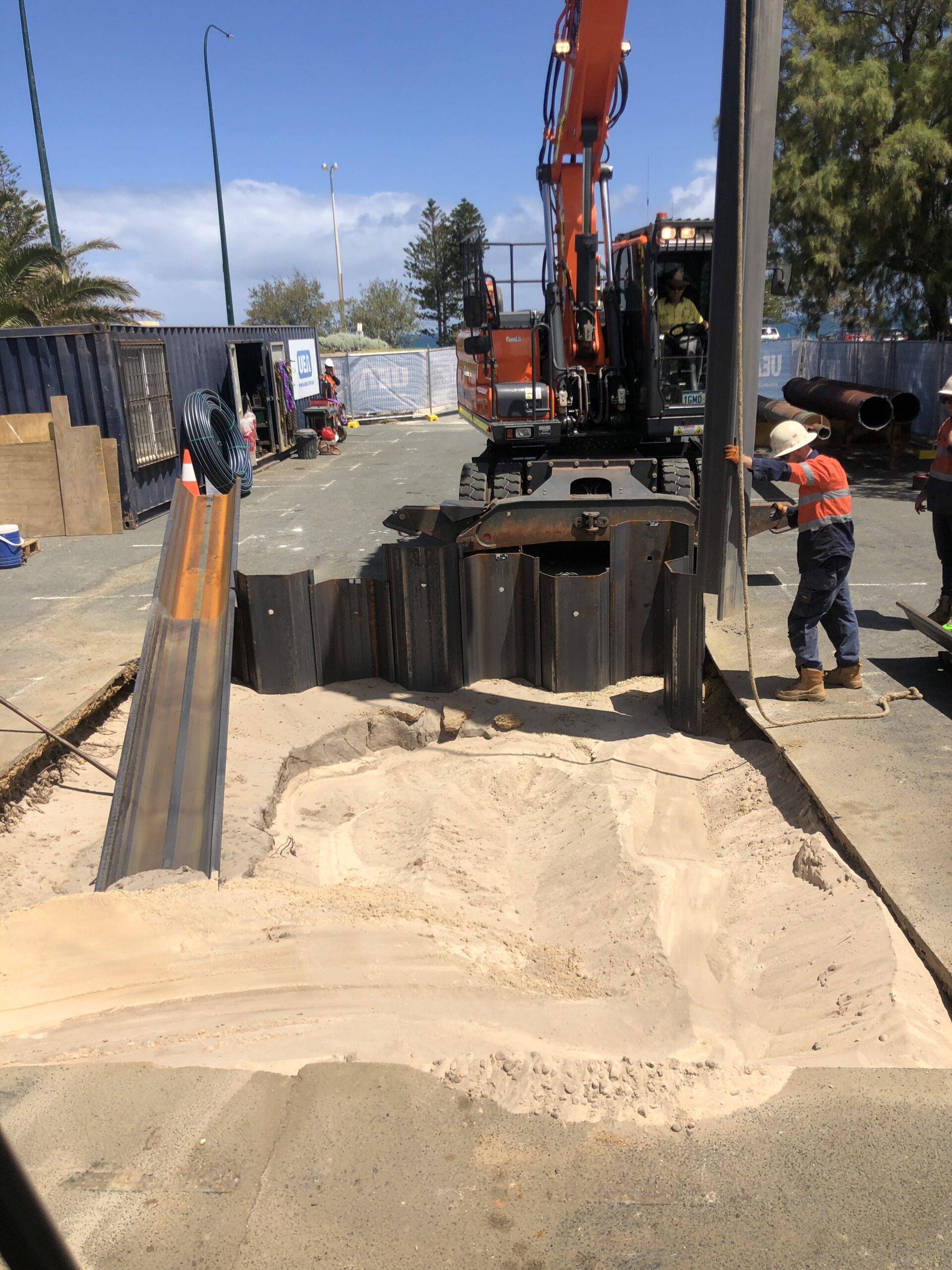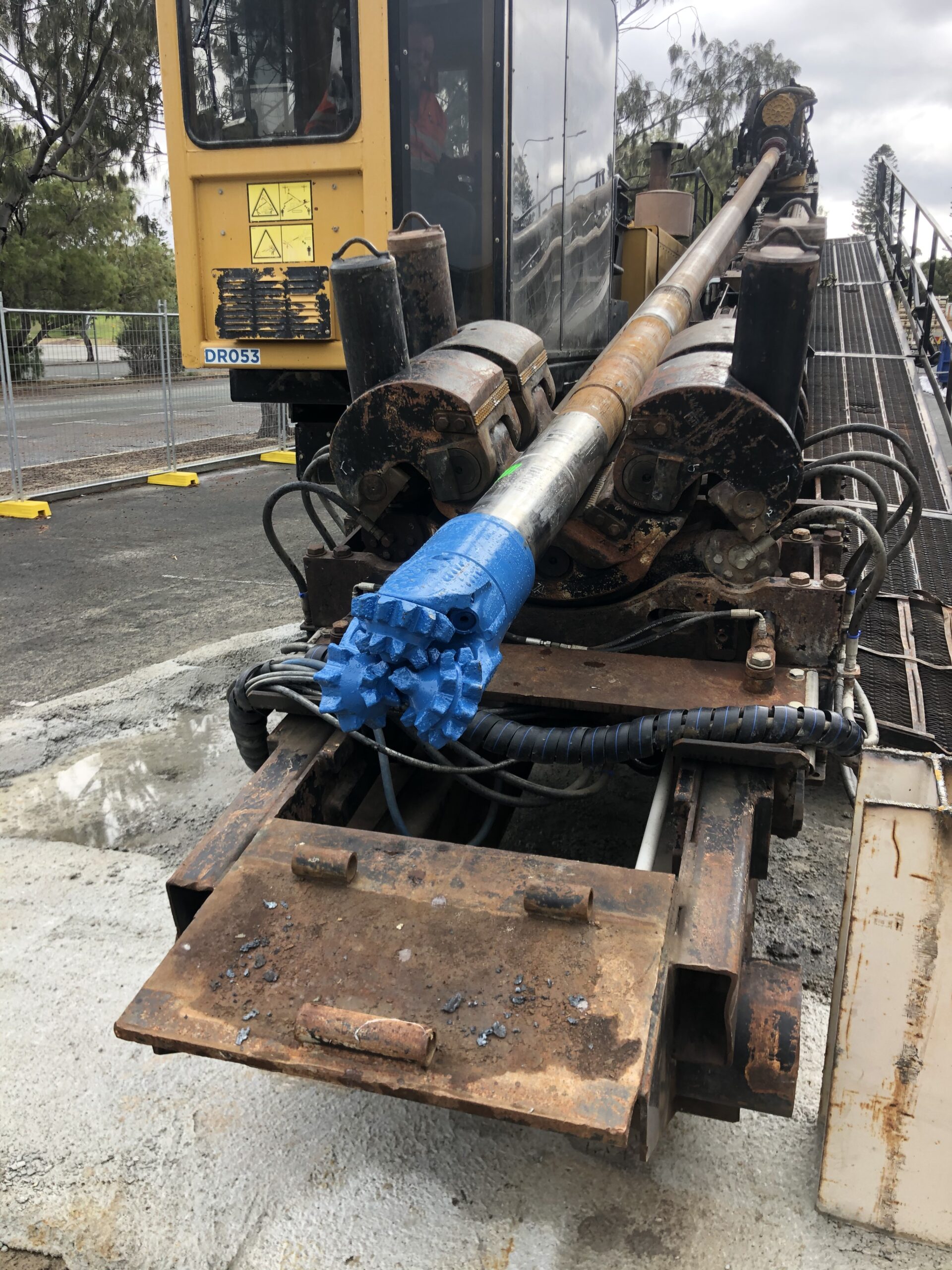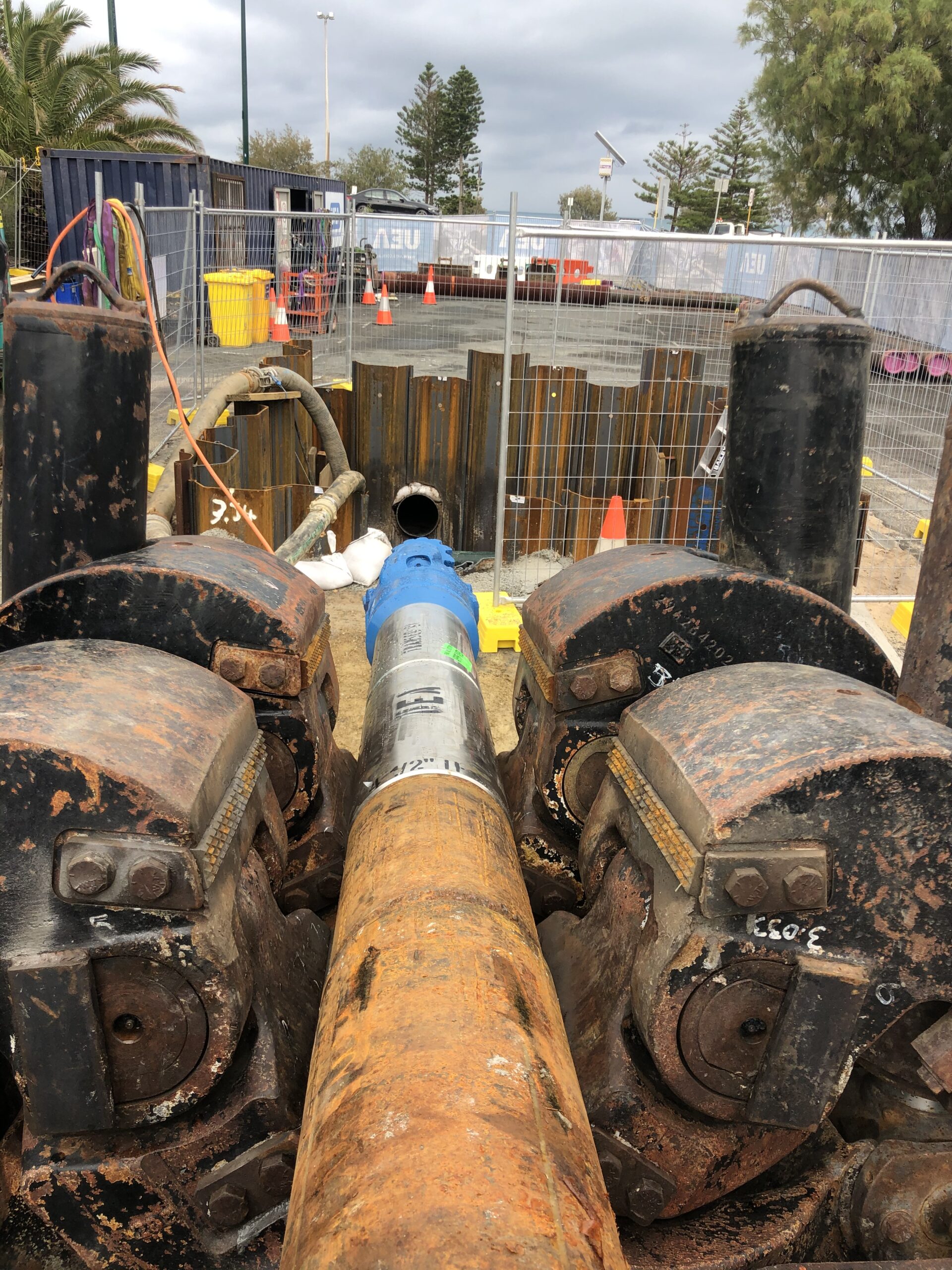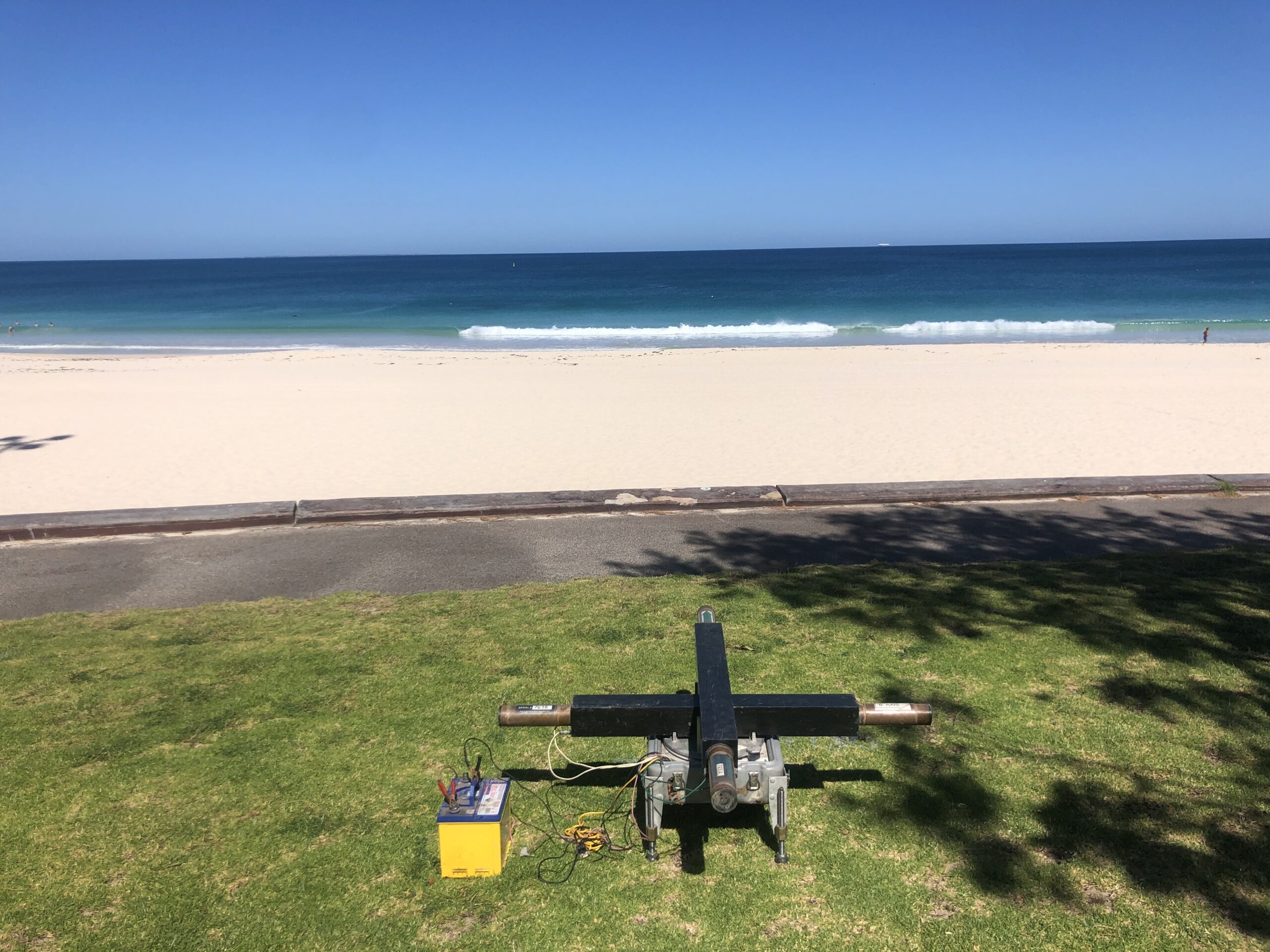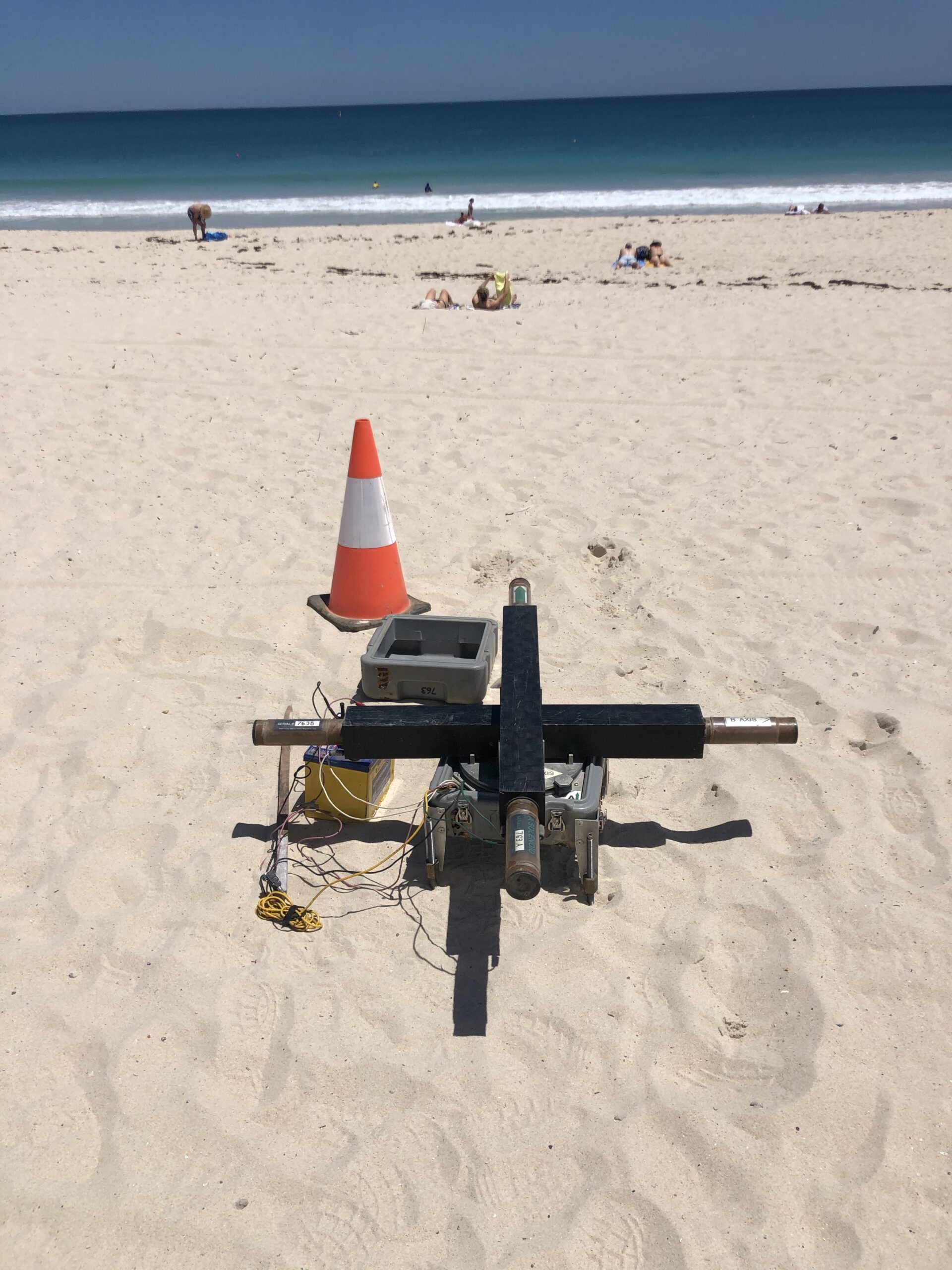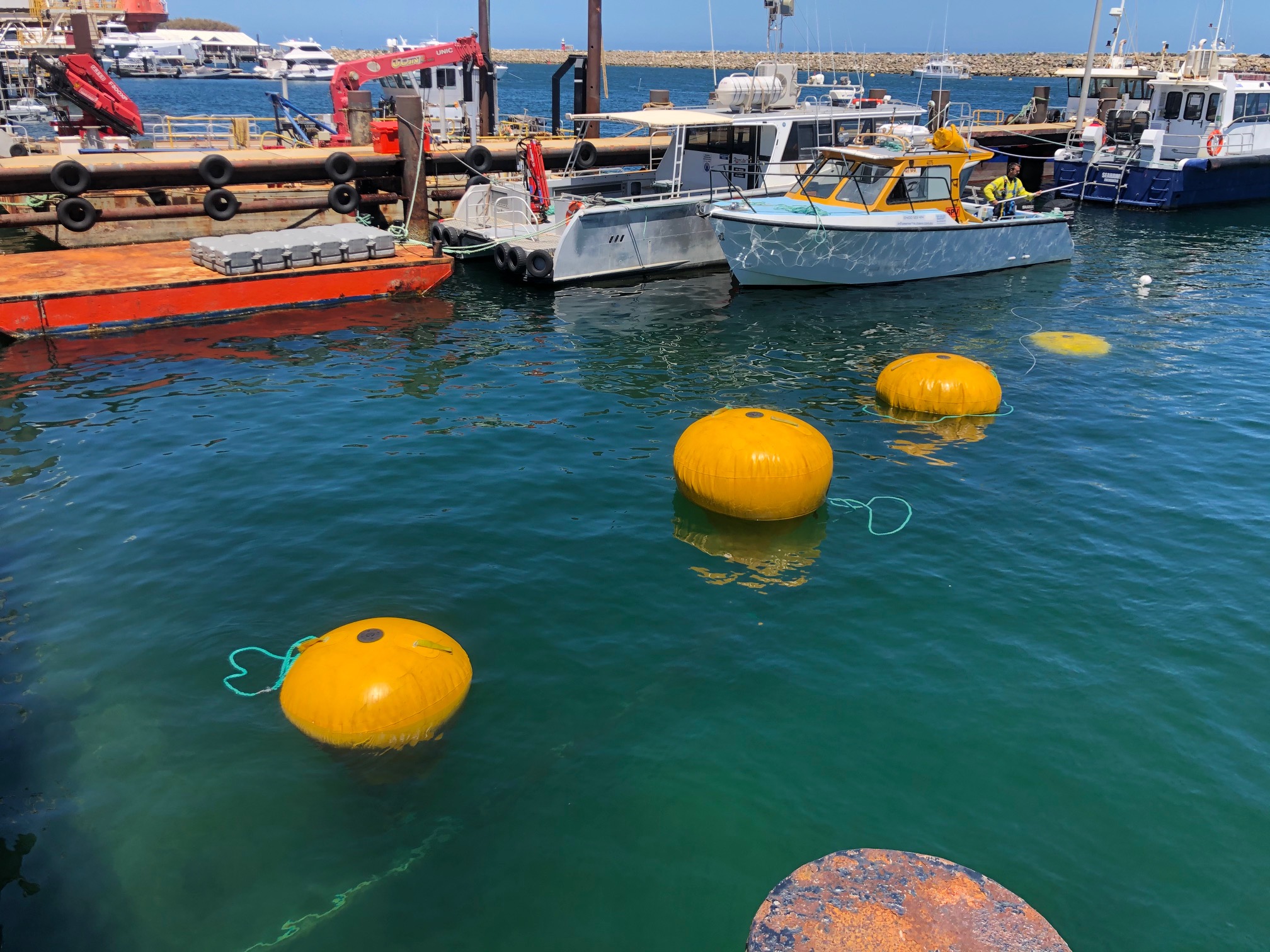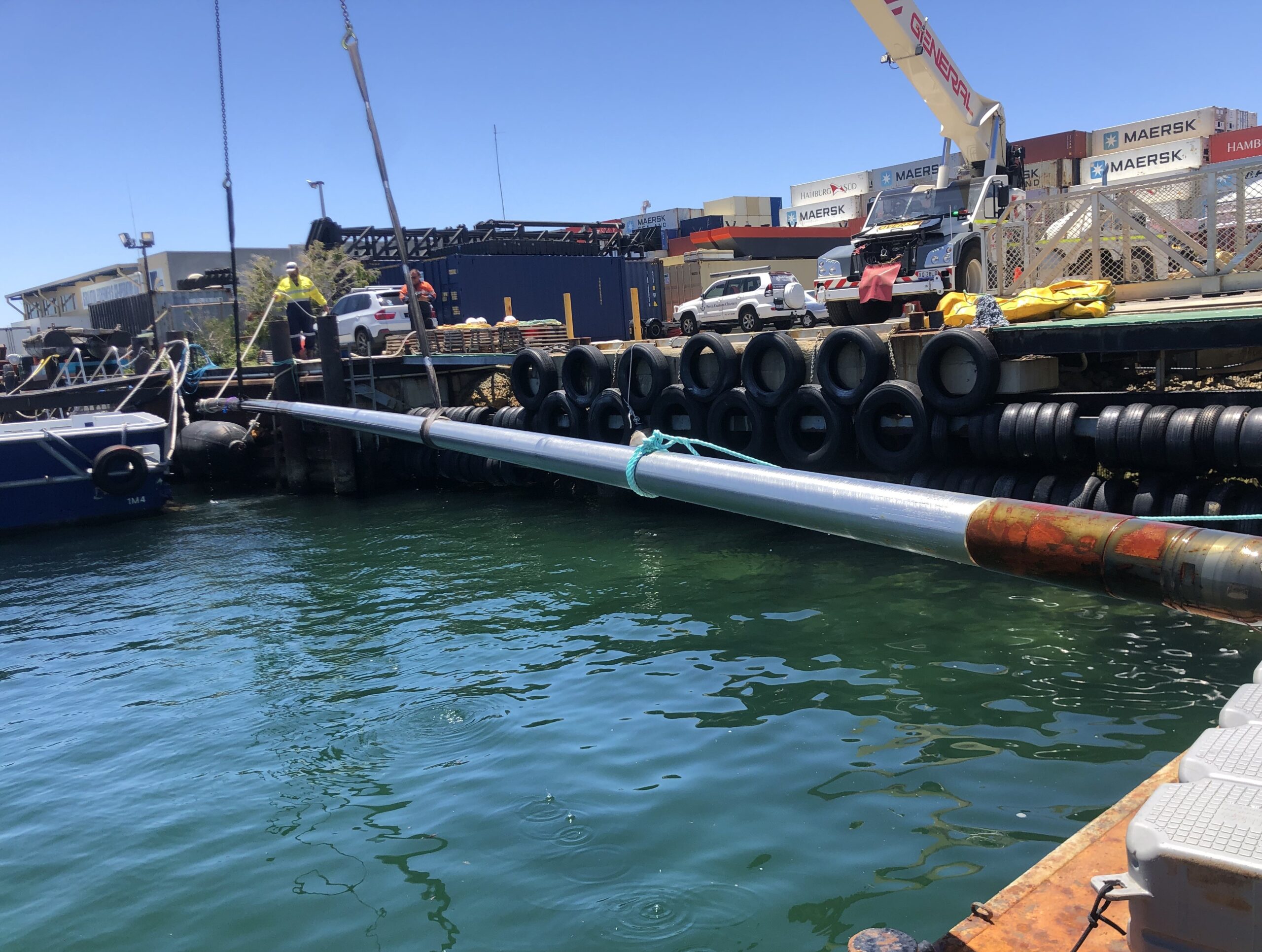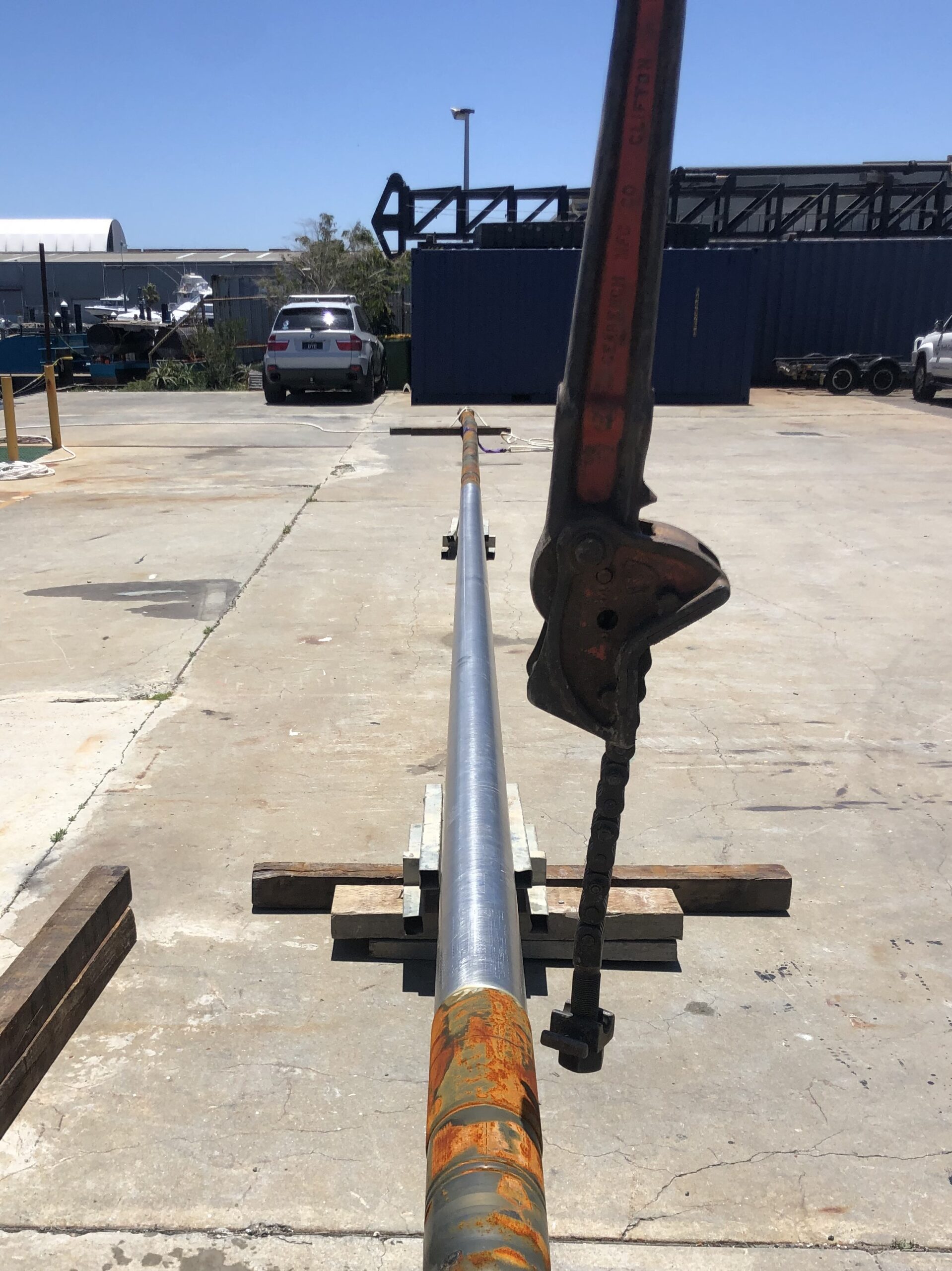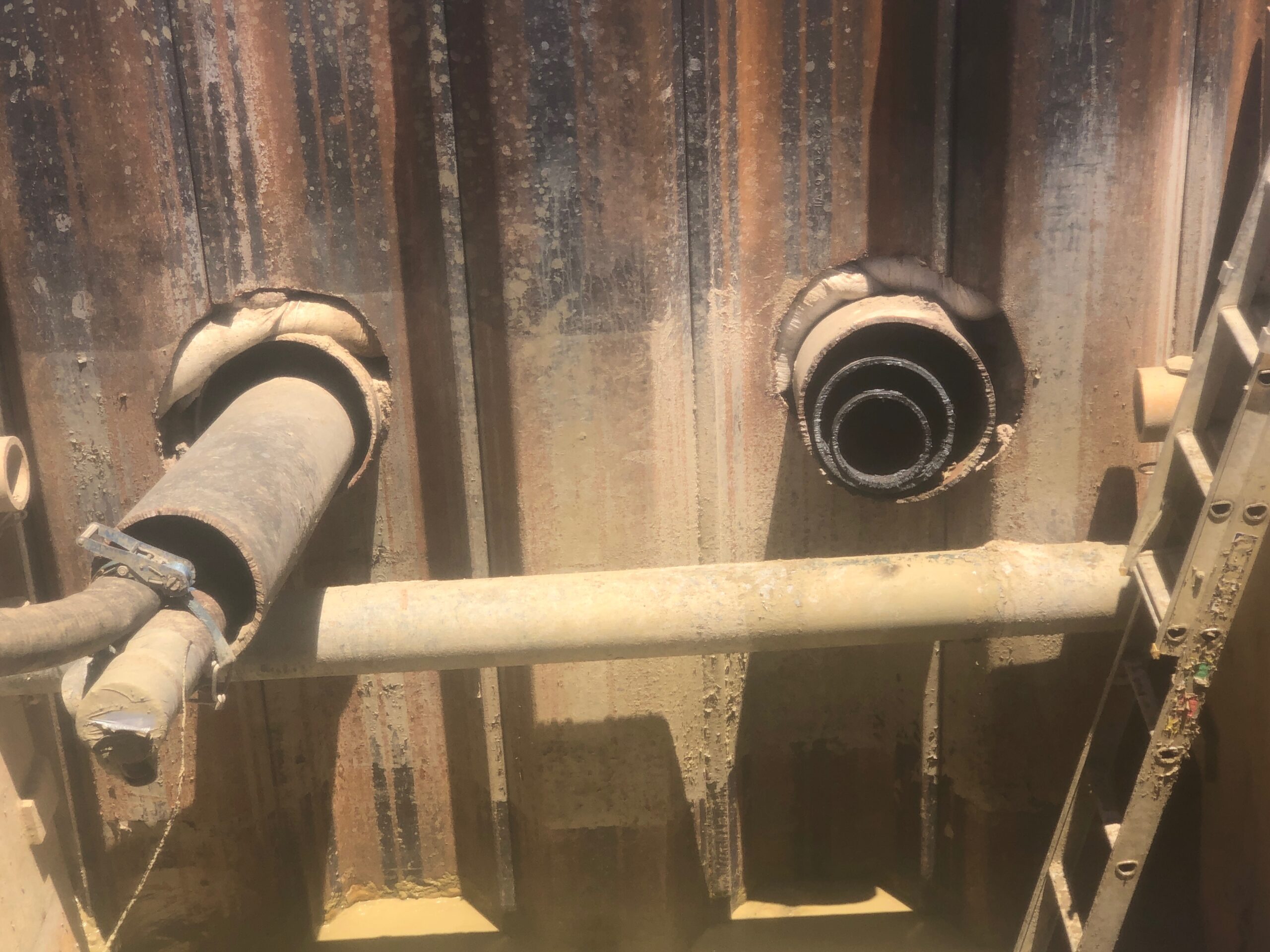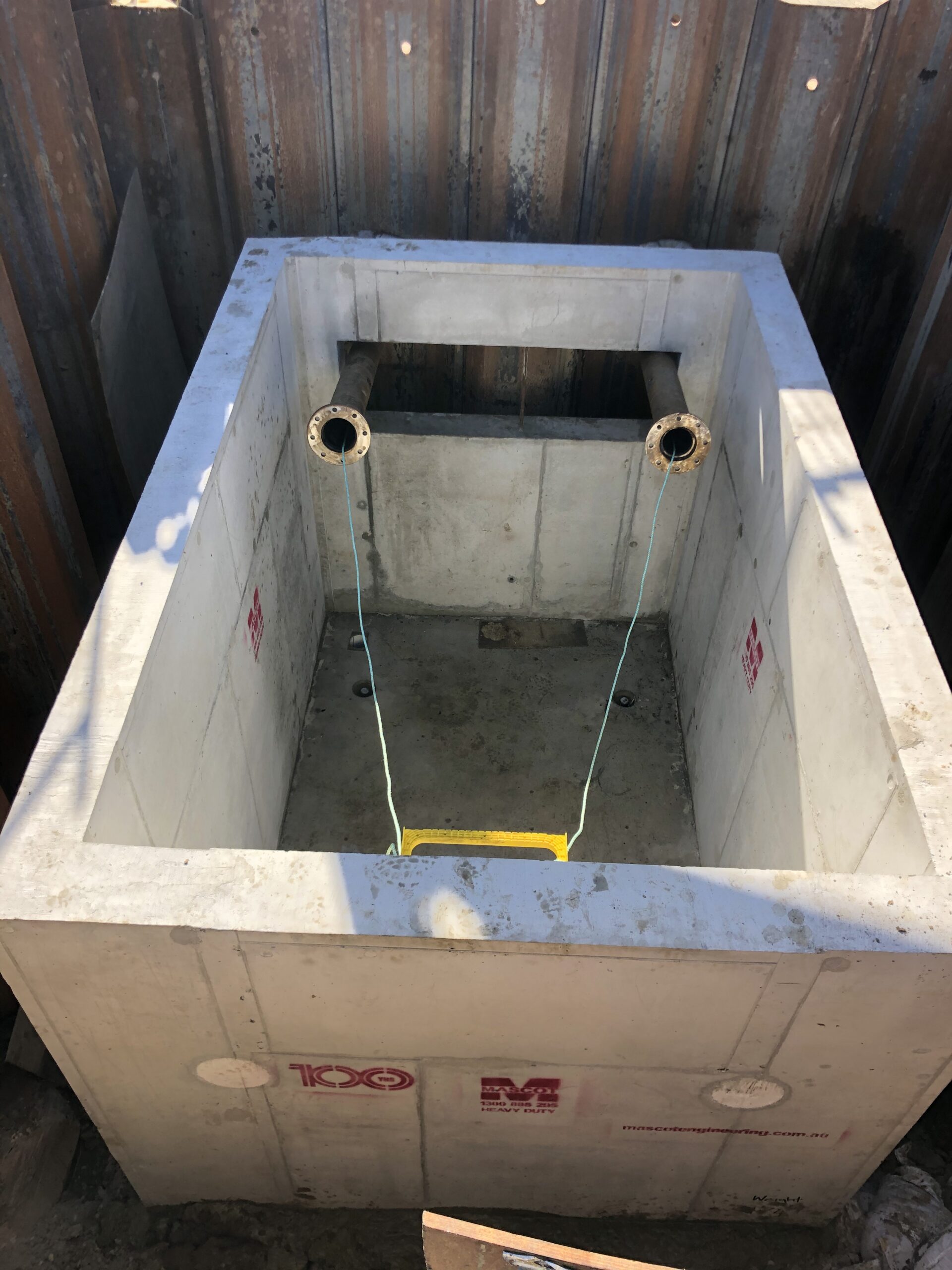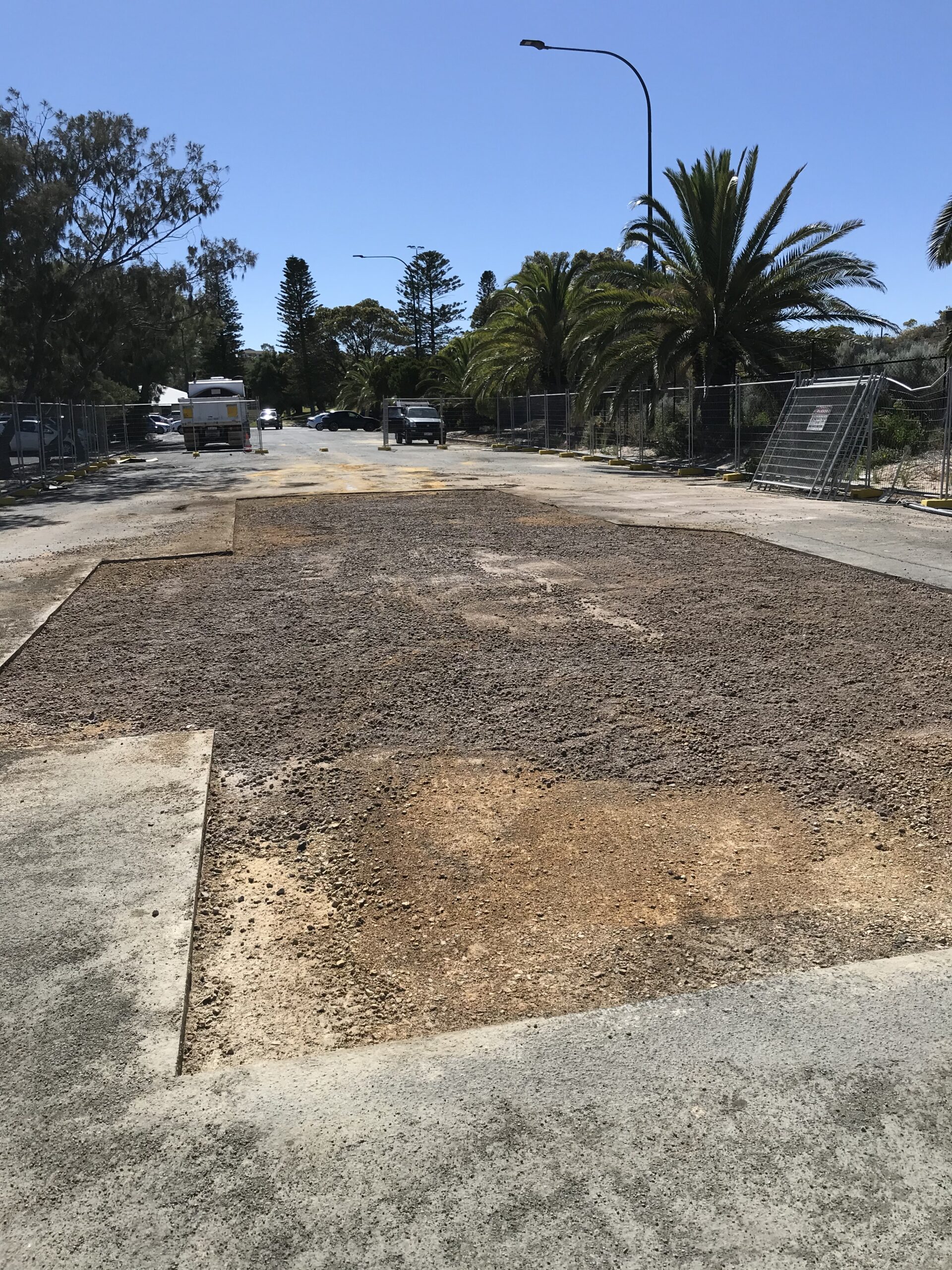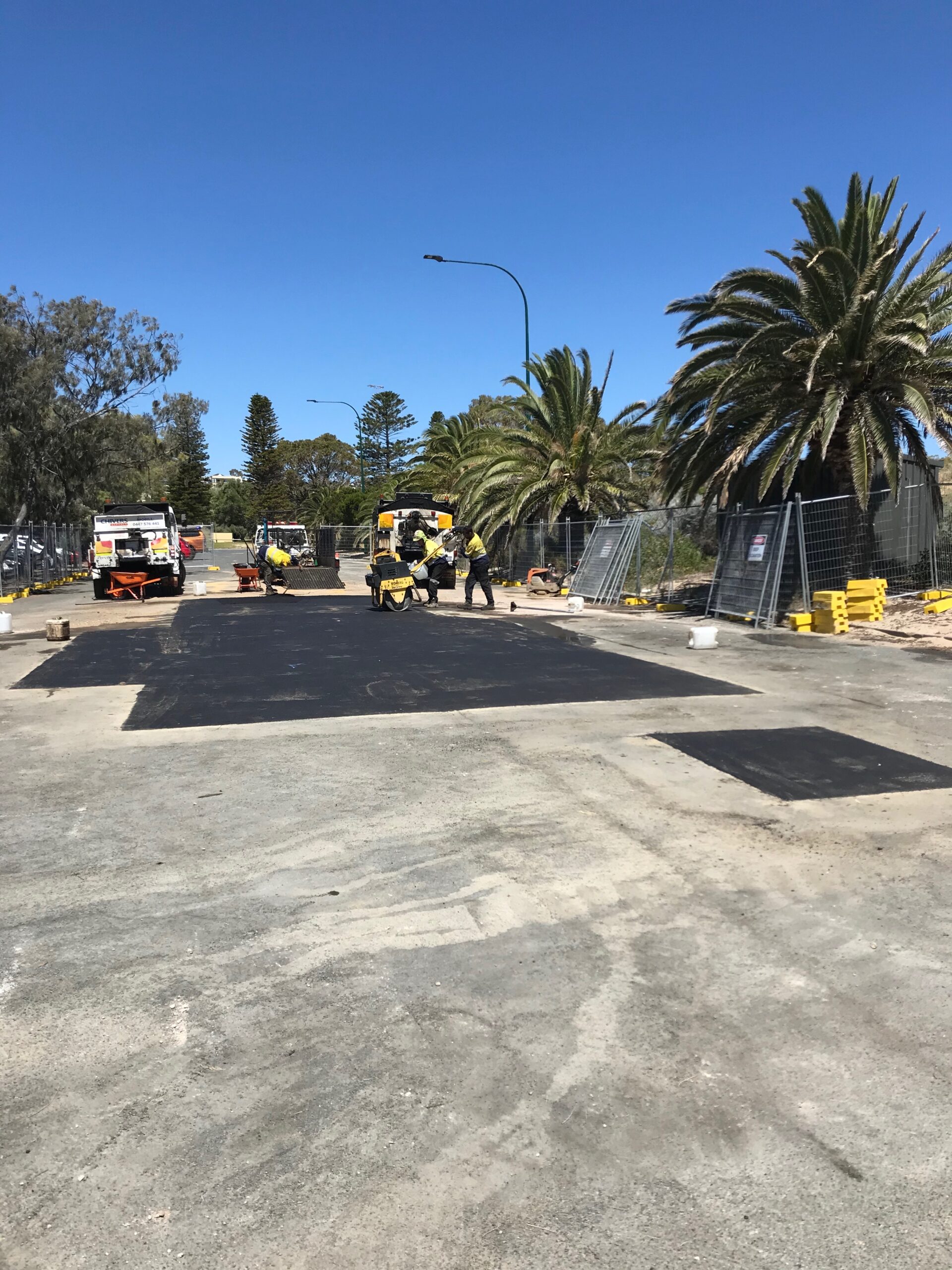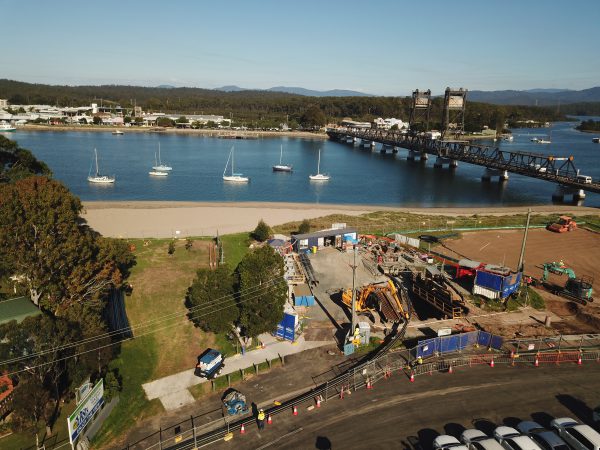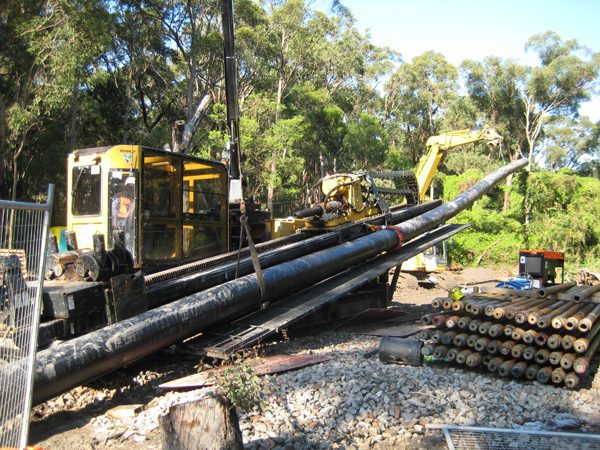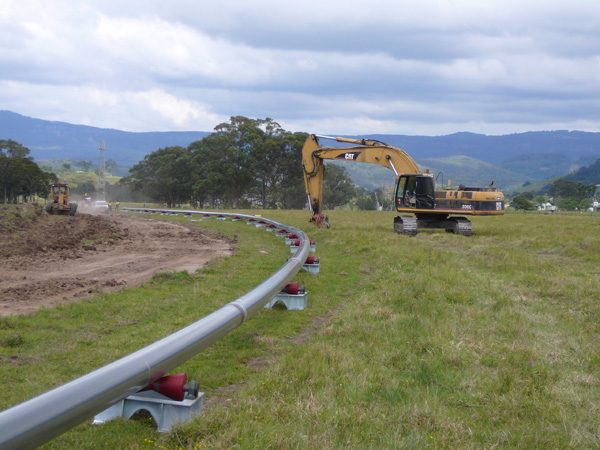Scope of Works
UEA was engaged as one of Australia’s leading HDD and ocean outfall contractors. Having successfully completed similar bores within the same local council area in which the OAC works would occur, UEA was considered with favour and as a low-risk contractor. UEA’s scope included the design and drilling of two HDD bores of approximately 730 metres in length, construction of an underground access chamber/manhole, proving and capping of installed steel conduits, works as executed survey and full site restoration. UEA engaged specialist dive teams to assist in all underwater activities at the exit site such as drill head removal and proving of the steel conduit.
CHALLENGES
Ocean outfall ventures present unique challenges not encountered during land-to-land HDD works. Working within sensitive marine environments requires crews to be extra vigilant when drilling to minimise any risk of drilling fluid loss. As a part of this, UEA’s experienced drilling fluid engineers employed specialised products that presented little to no harm if lost to the marine environment.
UEA encountered several unexpected ground conditions throughout the project, including a gravel layer approximately 500 metres along the bore path on both bores, and several pockets of varying material within the limestone strata along the second bore. Though progression of the first bore was relatively unobstructed by the varying strata, high torque and drag resistance was experienced during the subsequent bore. In response, UEA installed wash over casing along a significant length of the bore to relieve pressure and resistance on the drill rods. UEA quickly adapted to these conditions and was able to continue to bore through each of these strata changes.
Other challenges faced throughout the project included:
Uncertainties in accessibility and materials acquisition due to changing COVID-19 conditions
Mandatory quarantine for workers when entering WA
Working within popular community social hubs
Sandy and unstable ground at the entry site required installation of steel conductor casing
Design and construction of a custom pre-cast beach manhole pit to accelerate project handover.
COMPLETION
UEA utilised extensive knowledge of the local area and ground conditions to streamline the project throughout design, installation and handover. UEA’s highly trained and experienced team was able to work through any and all challenges that presented themselves and used these as opportunities to further develop and refine their skills. The site was handed over to the client to schedule and with zero incidents.

